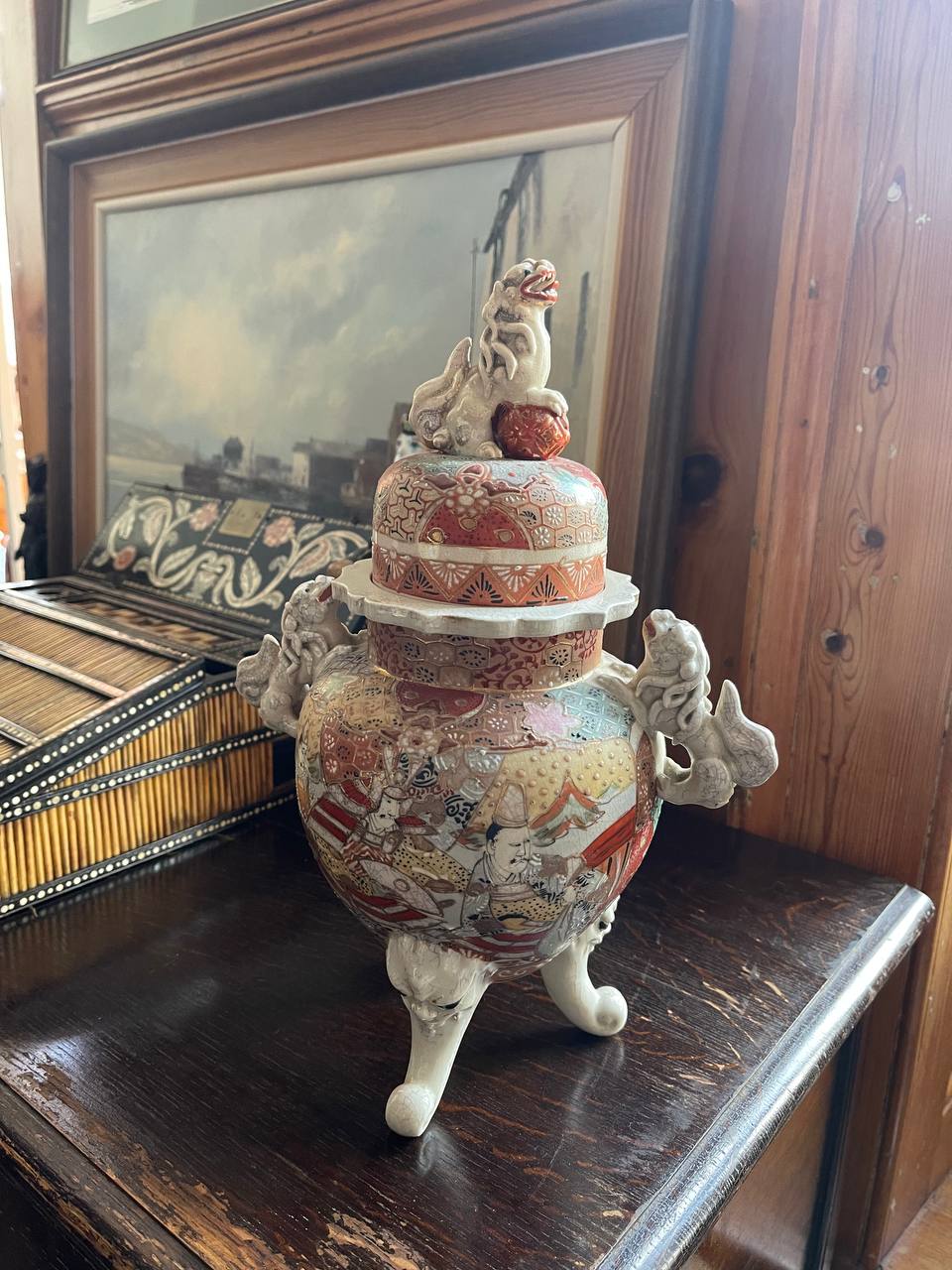
Antique Japanese Satsuma Ware Three-Legged Incense Burner: A Collector’s Guide
Share
Satsuma ware is one of the most celebrated styles of Japanese pottery, renowned for its intricate designs, historical significance, and timeless beauty. Among the most coveted pieces are the antique Japanese Satsuma three-legged incense burners, cherished by collectors and enthusiasts alike. In this article, we’ll explore the history, unique features, and tips for identifying genuine Satsuma ware to help you make an informed purchase or add a rare gem to your collection.
What is Satsuma Ware?
Satsuma ware originated in the late 16th century in the Satsuma Province (modern-day Kagoshima). Characterized by its creamy ivory glaze and finely detailed decorations, these pieces often depict scenes of Japanese culture, mythology, and nature. Over the centuries, Satsuma pottery gained international fame, especially during the Meiji era, when Japanese artisans began exporting their work to the West.
The Unique Appeal of Three-Legged Incense Burners
Satsuma incense burners are distinct for their three-legged design, which offers stability and aesthetic balance. They were traditionally used in temples and homes for ceremonial purposes or simply to enjoy the soothing aroma of incense. The intricate hand-painted patterns, often featuring gilded highlights and vibrant colors, make these burners true works of art.
Key features to look for in an antique Satsuma incense burner:
• Hand-painted designs: These often include flowers, landscapes, or figures of deities.
• Signature marks: Look for the artist’s or kiln’s mark on the base, a common feature of authentic Satsuma ware.
• Fine crackle glaze: The characteristic crackle finish is a hallmark of genuine Satsuma pottery.
How to Identify Genuine Satsuma Ware
Identifying an authentic antique Japanese Satsuma incense burner requires attention to detail:
1. Material: Authentic Satsuma ware is made of fine earthenware with a creamy base color.
2. Decoration: Look for intricate, hand-painted designs that show incredible craftsmanship.
3. Age: True antique pieces typically date back to the Edo or Meiji periods.
4. Marks: Genuine Satsuma ware often bears a distinct mark, usually in kanji, on the bottom of the piece.
Why Collect Satsuma Incense Burners?
Collectors value Satsuma incense burners for their beauty, craftsmanship, and historical significance. These items make stunning display pieces and often become the centerpiece of a collection. Additionally, antique Satsuma three-legged incense burners can be an excellent investment, as their value tends to appreciate over time.
Caring for Your Antique Satsuma Ware
Proper care ensures your Satsuma incense burner remains in pristine condition:
• Keep it away from direct sunlight and extreme temperatures.
• Gently clean with a soft, dry cloth; avoid using harsh chemicals or abrasives.
• Display in a safe, dust-free environment to prevent accidental damage.
Where to Find Antique Japanese Satsuma Incense Burners
If you’re looking to add a unique piece to your collection, visit CharmChase Antique & Vintage in Evesham. We specialize in carefully sourced antiques, including Japanese Satsuma ware and other collectible treasures. Our knowledgeable team can guide you in finding the perfect addition to your collection.
Conclusion
An antique Japanese Satsuma three-legged incense burner is more than just a decorative item; it’s a piece of history and a testament to Japanese artistry. Whether you’re a seasoned collector or new to the world of antiques, these exquisite items are sure to captivate your interest.
Explore our curated collection of antiques at CharmChase Antique & Vintage or contact us for more information on sourcing rare and valuable items.